'Lost Tomb of Jesus' Claim Called a Stunt
Archaeologists Decry TV Film
By Alan Cooperman Washington Post Staff Writer
Wednesday, February 28, 2007
http://www.washingtonpost.com/wp-dyn/content/article/2007/02/26/AR2007022600442.html
Leading archaeologists in Israel and the United States yesterday denounced the purported discovery of the tomb of Jesus as a publicity stunt.
Scorn for the Discovery Channel's claim to have found the burial place of Jesus, Mary Magdalene and -- most explosively -- their possible son came not just from Christian scholars but also from Jewish and secular experts who said their judgments were unaffected by any desire to uphold Christian orthodoxy.
"I'm not a Christian. I'm not a believer. I don't have a dog in this fight," said William G. Dever, who has been excavating ancient sites in Israel for 50 years and is widely considered the dean of biblical archaeology among U.S. scholars. "I just think it's a shame the way this story is being hyped and manipulated."
The Discovery Channel held a news conference in New York on Monday to unveil a TV documentary, "The Lost Tomb of Jesus," and a companion book about a tomb that was unearthed during construction of an apartment building in the Talpiyot neighborhood of Jerusalem in 1980.
James Cameron, the filmmaker who explored the wreck of the Titanic and directed an Oscar-winning feature film based on its sinking, is executive producer of the documentary. Its claims are based on six ossuaries, or stone boxes for holding human bones, found in the tomb.
The filmmakers contend that the inscriptions on the boxes say Yeshua bar Yosef (Jesus son of Joseph), Maria (Mary), Yose (Joseph), Matia (Matthew), Mariamene e Mara (Maria the Master) and Yehuda bar Yeshua (Judah son of Jesus). They maintain that "Mariamene e Mara" is Mary Magdalene and that Yehuda bar Yeshua may be her son by Jesus.
Simcha Jacobovici, the film's Israeli-born director, said in a telephone interview yesterday that he commissioned four statistical studies that concluded that the odds of those particular names appearing in a single family tomb from the 1st century are "somewhere between 600 and 2.4 million to one."
Jacobovici also said tests on the patina, or surface residue, of the "James Ossuary," which surfaced in 2002, indicate that it also came from the Talpiyot tomb. Israeli authorities have pronounced the James Ossuary, which purportedly held the bones of a brother of Jesus, a forgery and are prosecuting its owner. Jacobovici, who made a 2003 Discovery Channel film about it, maintains it is real.
Dever, a retired professor of archaeology at the University of Arizona, said that some of the inscriptions on the Talpiyot ossuaries are unclear, but that all of the names are common.
"I've know about these ossuaries for many years and so have many other archaeologists, and none of us thought it was much of a story, because these are rather common Jewish names from that period," he said. "It's a publicity stunt, and it will make these guys very rich, and it will upset millions of innocent people because they don't know enough to separate fact from fiction."
Similar assessments came yesterday from two Israeli scholars, Amos Kloner, who originally excavated the tomb, and Joe Zias, former curator of archaeology at the Israeli Antiquities Authority. Kloner told the Jerusalem Post that the documentary is "nonsense." Zias described it in an e-mail to The Washington Post as a "hyped up film which is intellectually and scientifically dishonest."
Jodi Magness, an archaeologist at the University of North Carolina at Chapel Hill, expressed irritation that the claims were made at a news conference rather than in a peer-reviewed scientific article. By going directly to the media, she said, the filmmakers "have set it up as if it's a legitimate academic debate, when the vast majority of scholars who specialize in archaeology of this period have flatly rejected this," she said.
Magness noted that at the time of Jesus, wealthy families buried their dead in tombs cut by hand from solid rock, putting the bones in niches in the walls and then, later, transferring them to ossuaries.
She said Jesus came from a poor family that, like most Jews of the time, probably buried their dead in ordinary graves. "If Jesus' family had been wealthy enough to afford a rock-cut tomb, it would have been in Nazareth, not Jerusalem," she said.
Magness also said the names on the Talpiyot ossuaries indicate that the tomb belonged to a family from Judea, the area around Jerusalem, where people were known by their first name and father's name. As Galileans, Jesus and his family members would have used their first name and home town, she said.
"This whole case [for the tomb of Jesus] is flawed from beginning to end," she said.

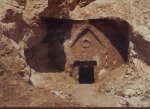
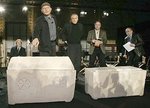






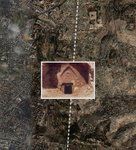


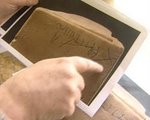






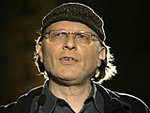

















No comments:
Post a Comment